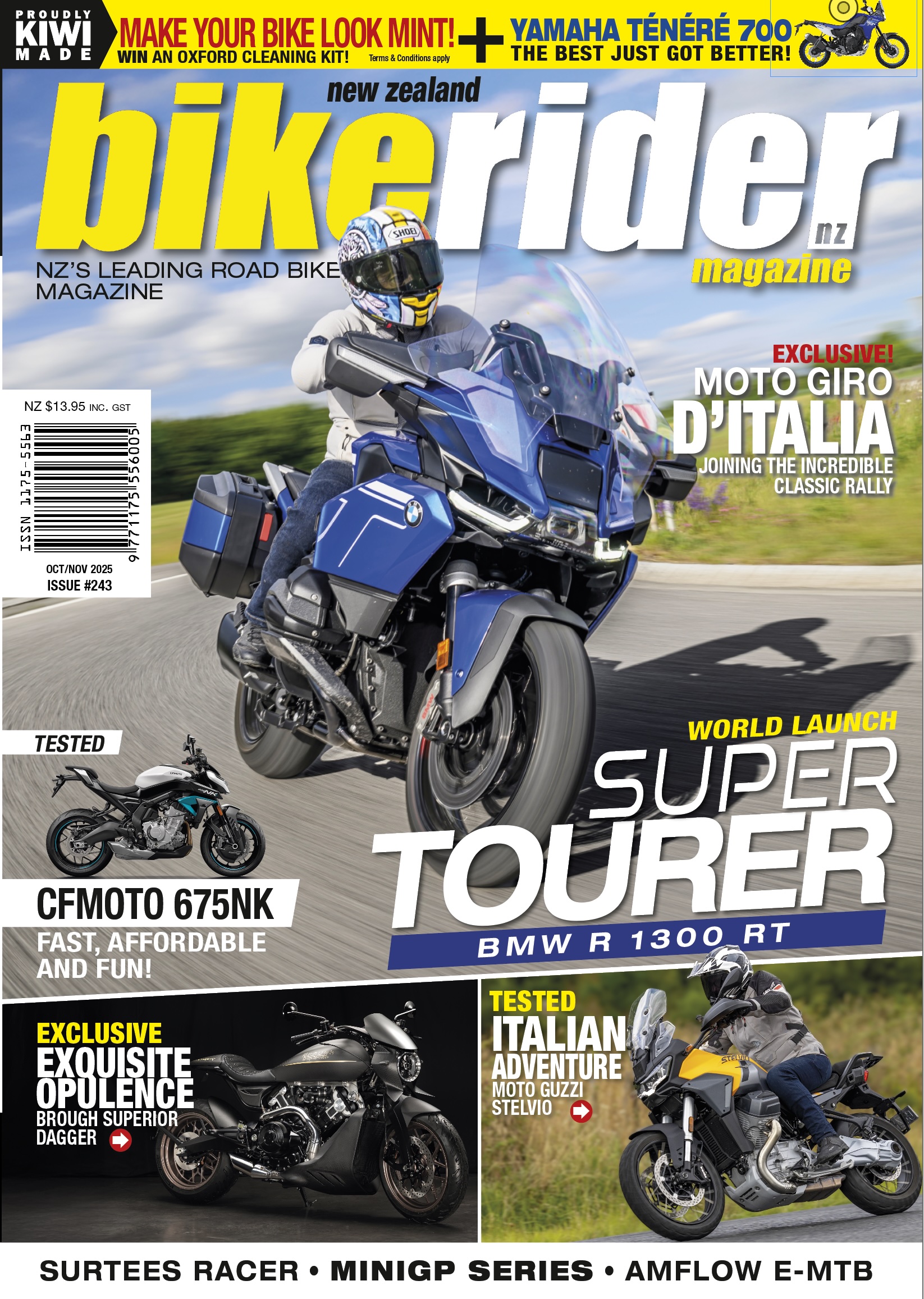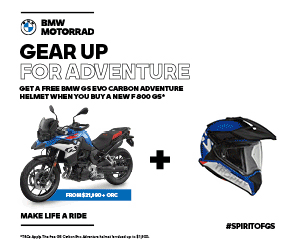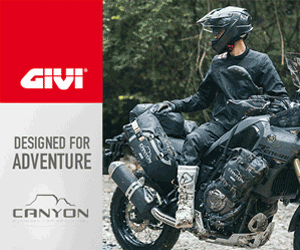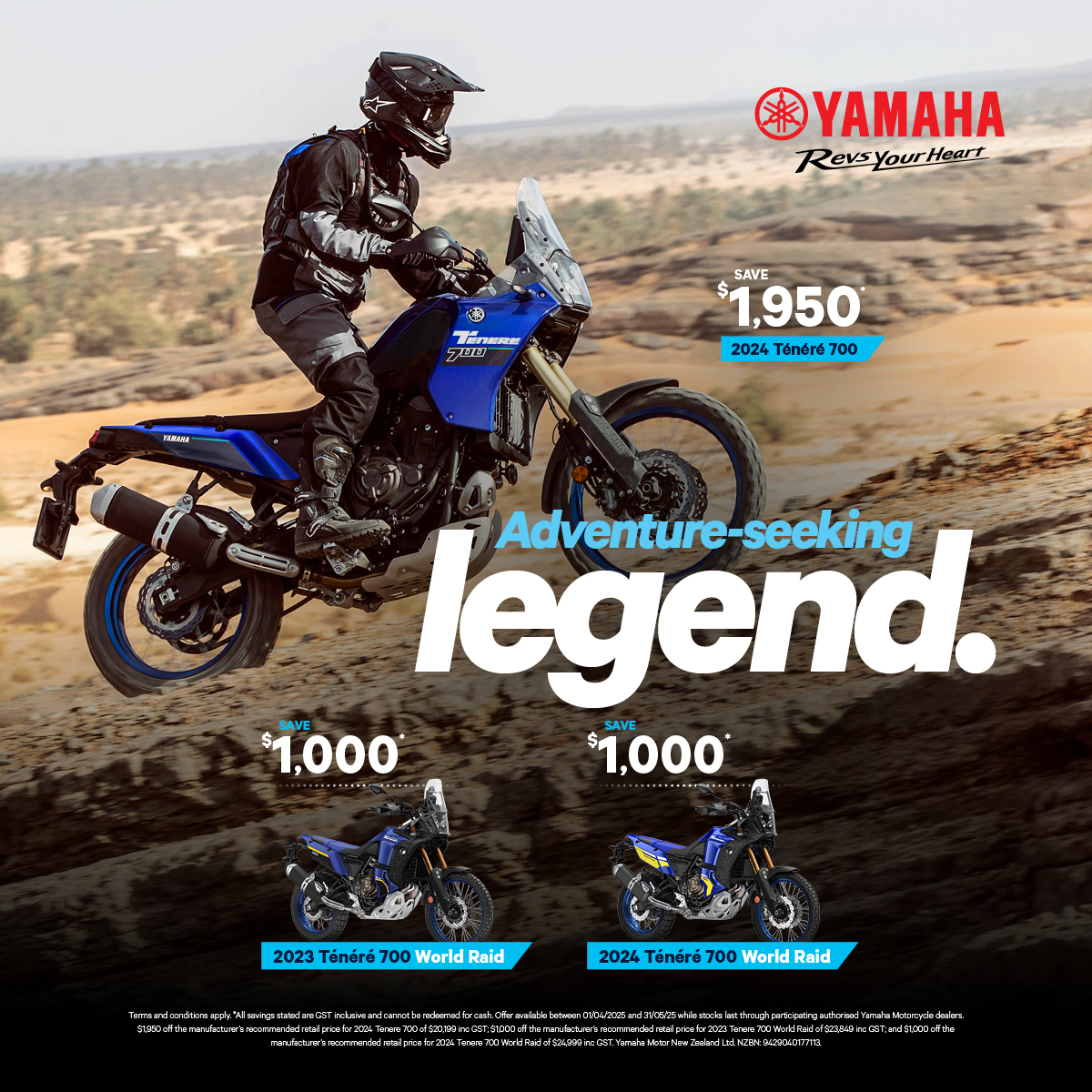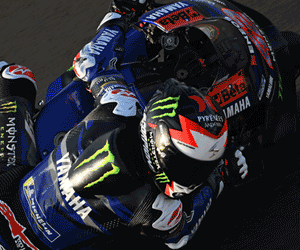Introduction
I’ve always had a soft spot for Yamaha’s MT-07. Over the years, it’s built a reputation for being one of the most well-rounded bikes in the learner-approved space—torquey, reliable, and a whole lot of fun without being intimidating. So when I got the chance to throw a leg over the updated 2025 LAMS version, I was both curious and hopeful. Curious to see how Yamaha had evolved an already solid platform, and hopeful that the changes wouldn’t dull what made it great in the first place. Spoiler: they didn’t.
The Styling
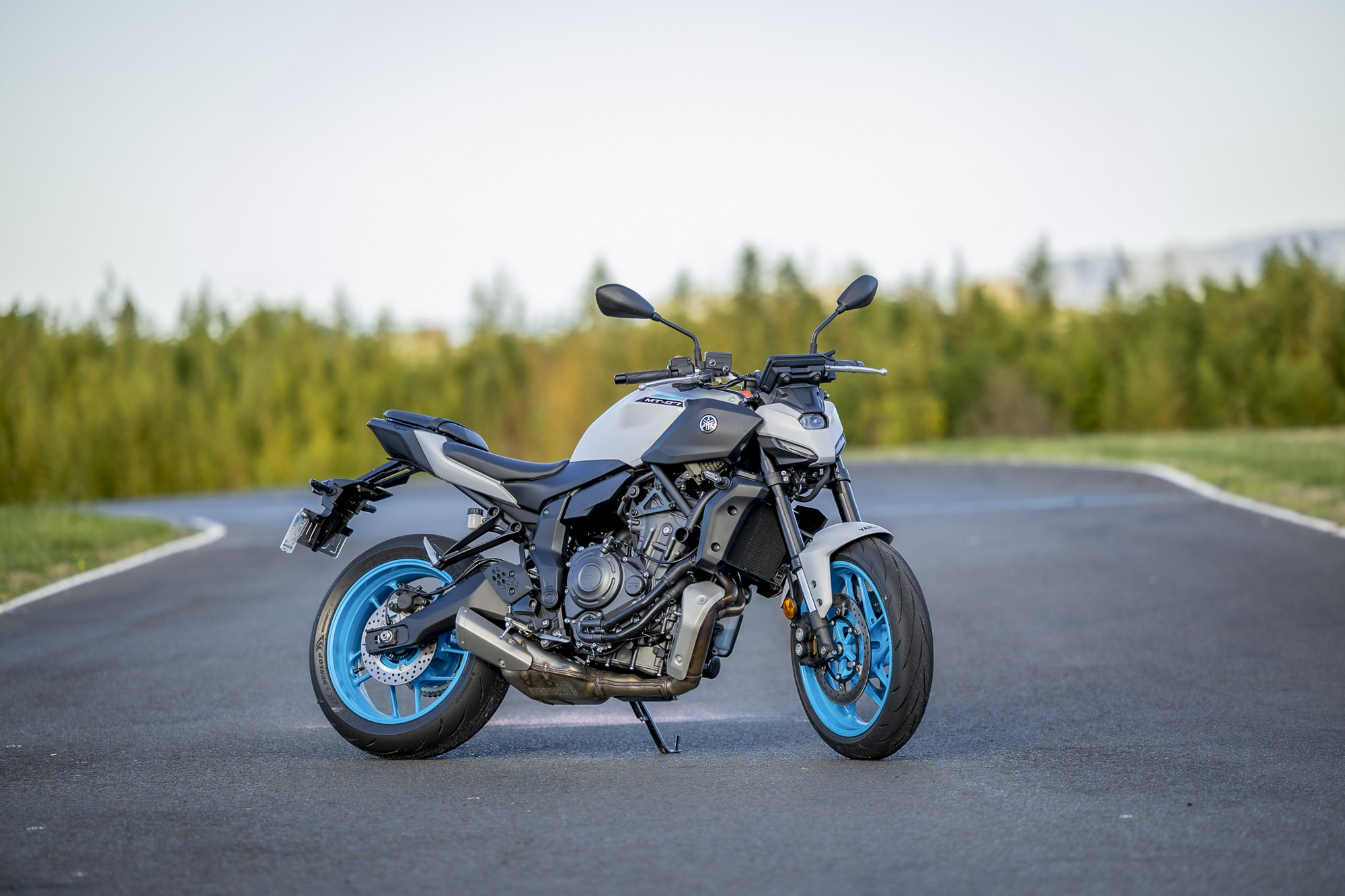
The first thing that struck me was the styling. Gone is the polarising “cyclops” headlight from the previous generation—thankfully. I wasn’t a fan of it back then, and I know I wasn’t alone. This new model looks sharper and far more refined. There’s a visual maturity to it now, like it’s finally grown into the role of the middleweight streetfighter it was always meant to be. The tank has been scalloped aggressively, the tail is more angular, and from any angle, it looks like a scaled-down MT-09—in the best possible way. It’s still unmistakably MT, just better proportioned and more cohesive.
Yamaha MT-07: The Ride
Climbing on, I was immediately greeted by the new TFT dash. It’s a surprisingly big upgrade from the old LCD unit. The screen is crisp, colourful, and fully digital with two different display themes—both with a kind of cyberpunk, techy vibe. I played around with the display before setting off and it gave the cockpit a much more premium feel than I expected. It’s a small touch, but it makes a difference when you’re spending a lot of time on the bike.
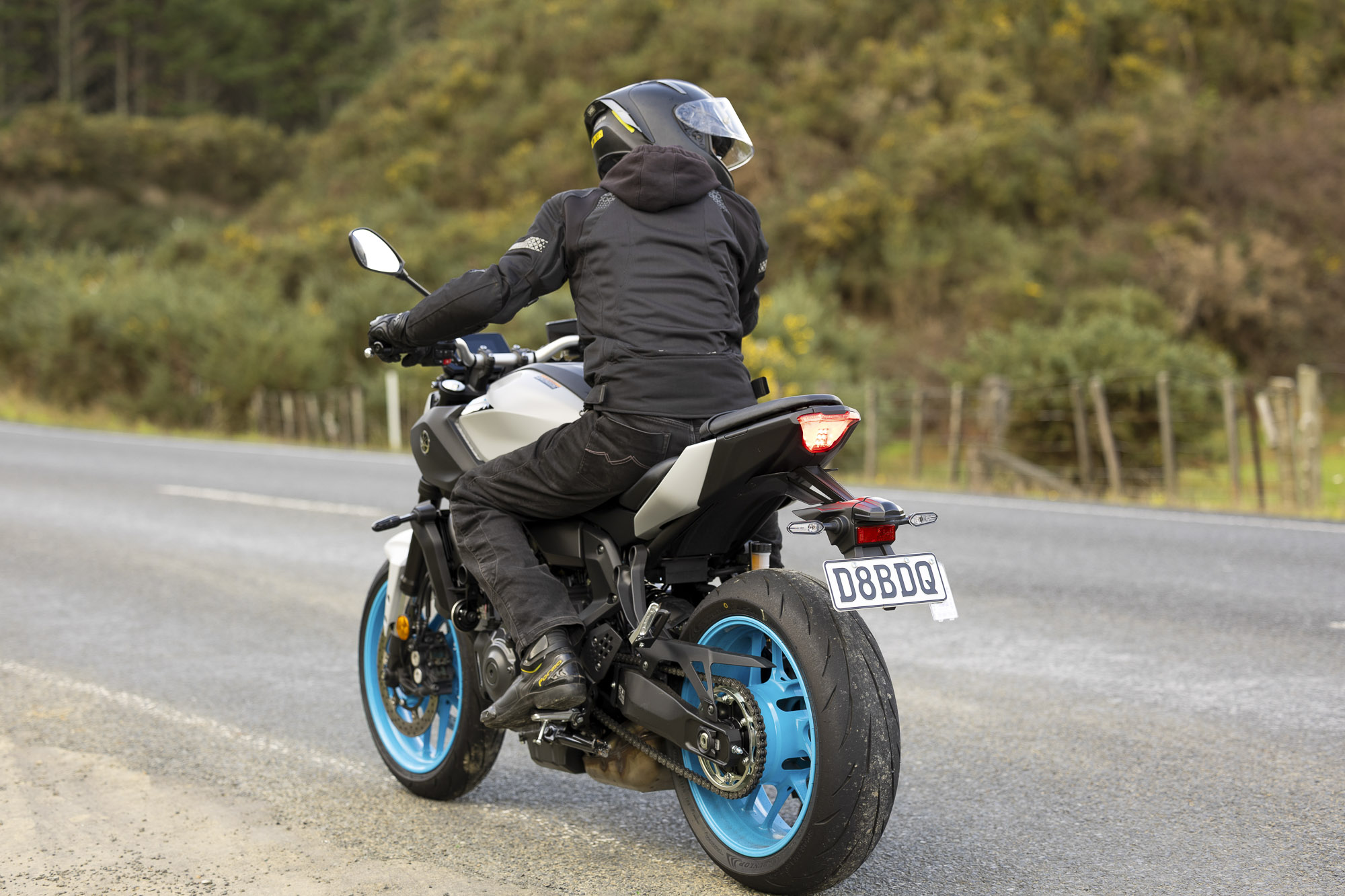
What I really noticed once I got rolling was the new riding position. The handlebars are mounted lower than before, which gives a more engaged stance without tipping over into sportbike territory. It still feels upright and natural, but with a touch more forward intent. The seat height hasn’t changed much and at around 805mm, it’s still beginner-friendly. Flat-footing at lights wasn’t an issue for me, and the overall layout made manoeuvring in traffic a breeze.
Now let’s talk engine—the beloved CP2. This 689cc parallel-twin has been slightly tweaked to meet Euro5+ emissions standards, but to Yamaha’s credit, it still has all the character I remember. The ride-by-wire throttle is new for 2025 and to be honest, I wasn’t sure how it would feel at first. Some ride-by-wire systems can be vague or overly digital, but Yamaha has done a great job here. Throttle response is smooth and precise. No awkward delays, no snatchiness—just clean, predictable power delivery from the bottom up.
I took the MT-07 through city traffic and it didn’t put a foot wrong. The low-end torque makes it effortless to dart through gaps or roll on from lights, and the compact chassis means it threads through congestion with minimal effort. But what really surprised me was the acoustic feedback. Yamaha has added sound ducts that route intake noise toward the rider, and it makes the experience more visceral. I could hear the growl of the engine when I twisted the throttle, especially around town where engine noise matters more than wind noise. It doesn’t sound overly loud or obnoxious, just purposeful.

Once I escaped the city and headed for the twisties, the real fun began. The MT-07 has always been a lively handler, but the 2025 model feels much more composed. The new front forks are the standout upgrade here. They offer a level of control and feedback that the old model just didn’t have. Whether I was trail braking into tighter corners or flicking through fast, flowing bends, the front end stayed stable and predictable. However, the stiff rear end turned out to be slightly unnerving, with the slightest bumps tending to unsettle the bike, and the false sense of comfort I had at the start began to disappear. Admittedly, I am probably on the lighter side for the setup, but the shock felt firmer than it probably needed to be.
Braking has also improved. The callipers and rotors haven’t changed dramatically, but the lever feel is more consistent, especially after repeated hard stops. Two fingers were enough almost all the time, and I never felt like I was reaching the limits of the braking setup. It just worked—again, a confidence-booster for newer riders and a welcome refinement for more experienced ones.
Of course, it wasn’t all perfect. The slipper clutch left me wanting more. While Yamaha says it’s there, I found it didn’t quite offer enough slip under aggressive downshifts. A few times, I felt the rear hop and squirm just a little—nothing dangerous, but enough to notice. I also ran into a few false neutrals on hard downshifts, and with no quickshifter as standard, you really have to be deliberate with your foot. If I were buying this bike, the first accessory I’d add would be the quickshifter—it would smooth out those shifts and make the ride even more enjoyable.
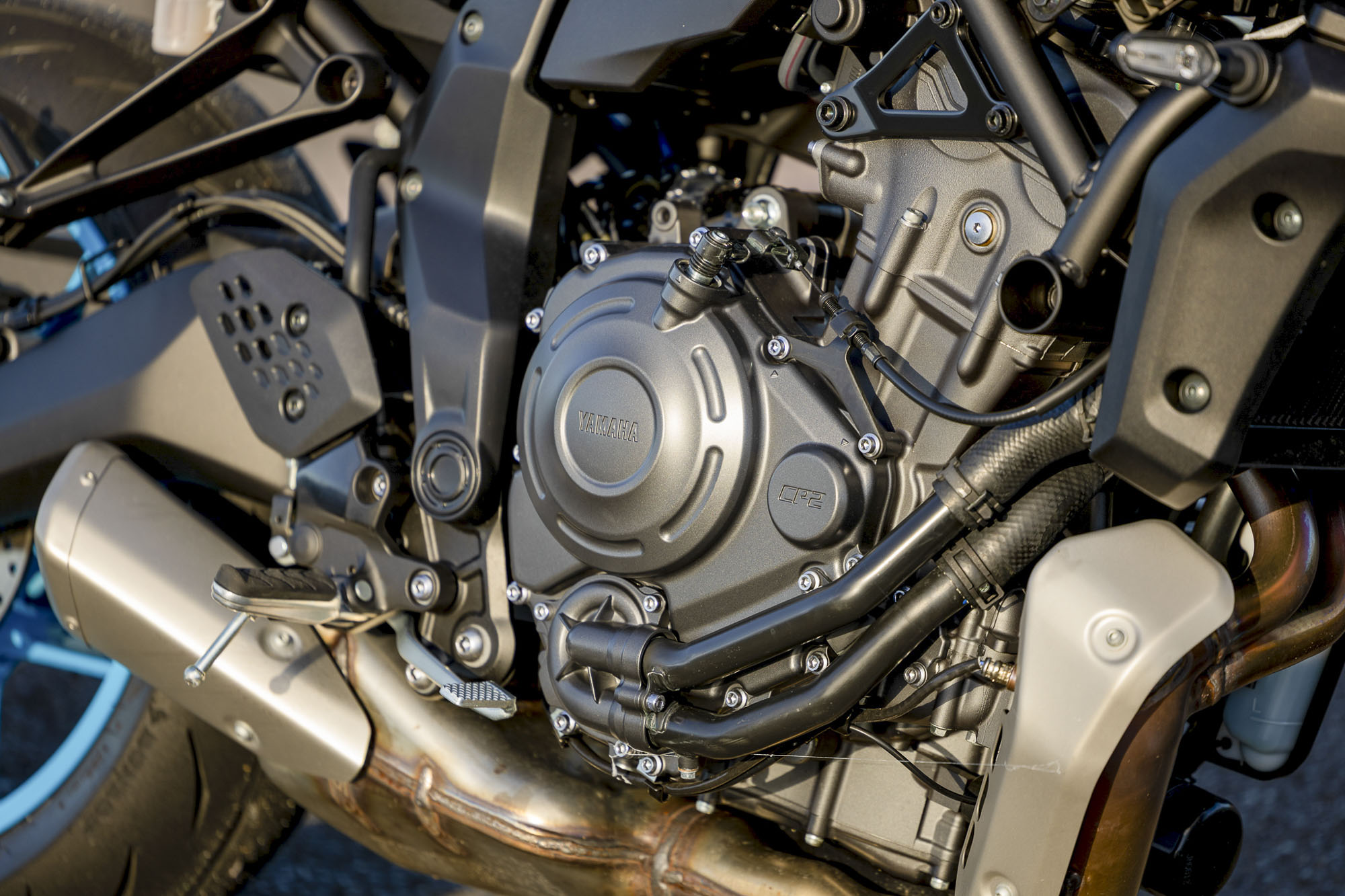
Despite those small gripes, the overall ride quality is a clear step up from the last generation. It feels like Yamaha has addressed most of the real-world complaints riders had without overcomplicating things. The CP2 engine still feels like two bikes in one—easy-going in the city, yet happy to be pushed hard in the hills. And that dual nature is exactly what makes the MT-07 such a compelling option.
BRM Verdict
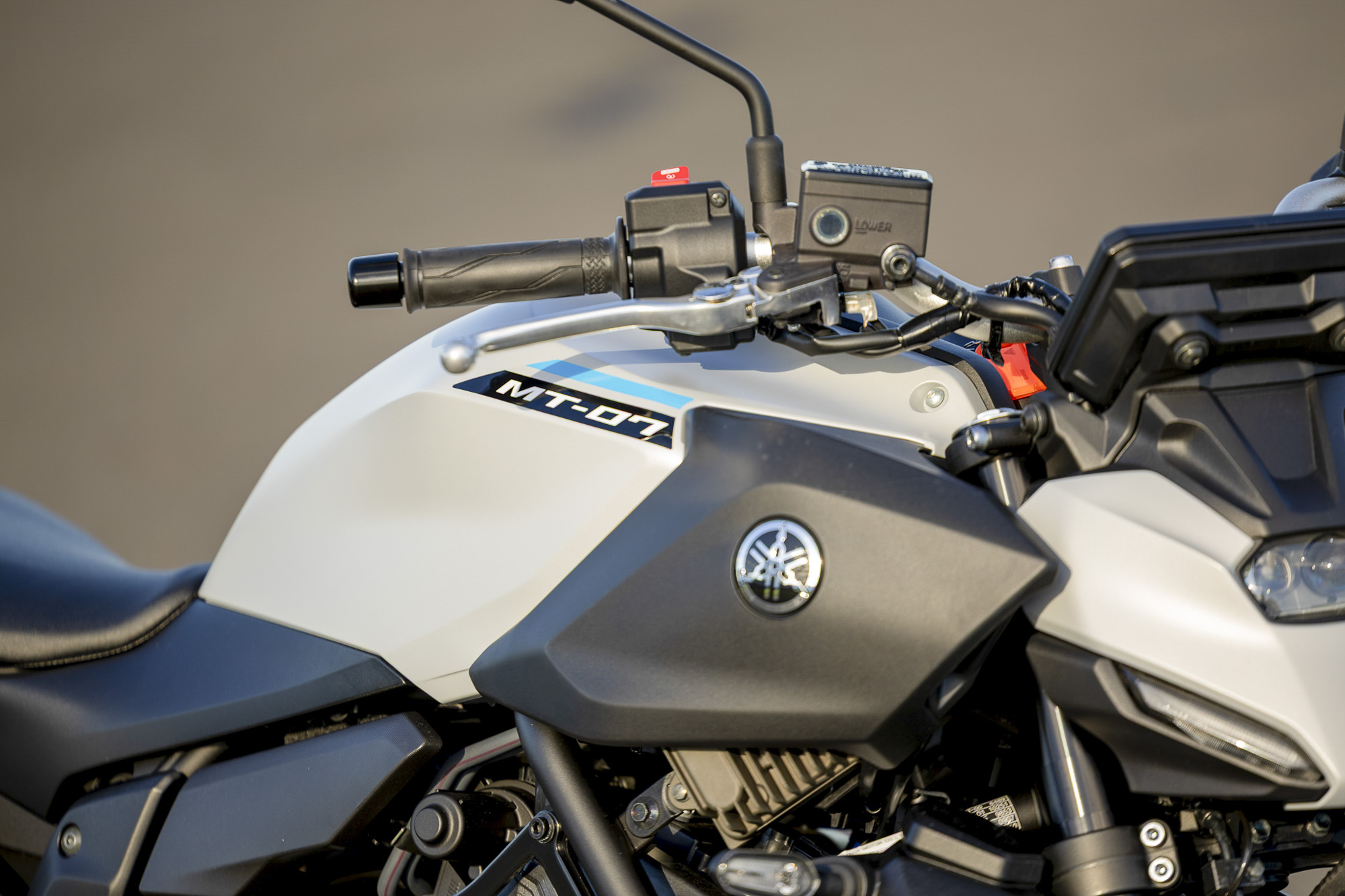
So who is this bike really for? In my opinion, it’s perfect for newer riders who want to grow into their bike rather than outgrow it within a year. The LAMS-approved tuning keeps it approachable, but there’s enough performance and personality here that you won’t feel the need to trade up anytime soon. At the same time, experienced riders who want a lightweight, no-nonsense middleweight will find a lot to love. It’s simple, it’s punchy, and it’s got more finesse than ever before.
After spending a solid day with the 2025 Yamaha MT-07 LAMS, I walked away genuinely impressed. Yamaha didn’t try to reinvent the formula. Instead, they’ve refined it in all the right places—styling, tech, and throttle feel—without losing the soul of what made the MT-07 such a hit in the first place.
2025 Yamaha MT-07: Specificiations
Price: $14,849 Ride Away
Engine
Type
Liquid-cooled, 4-stroke, DOHC, 4-valve, 2-cylinder
Displacement (cc)
655.0
Bore x Stroke (mm)
78.0 x 68.6
Compression Ratio
11.0 : 1
Lubrication System
Wet sump
Fuel Management
Fuel Injection
Ignition
TCI
Starter System
Electric
Fuel Tank Capacity (L)
14.0
Final Transmission
Chain
Transmission
Constant mesh 6-speed
Frame Type
Diamond
Suspension Front
Telescopic forks, 130mm travel
Suspension Rear
Swingarm (link suspension), 130mm travel
Brakes Front
Hydraulic dual discs, 298mm – ABS
Brakes Rear
Hydraulic single disc, 245mm – ABS
Tyres Front
120/70 ZR 17M/C(58W) Tubeless
Tyres Rear
180/55 ZR 17M/C(73W) Tubeless
Length (mm)
2065
Width (mm)
780
Height (mm)
1110
Seat Height (mm)
805
Wheelbase (mm)
1395
Ground Clearance (mm)
150
Wet Weight (kg)
183







